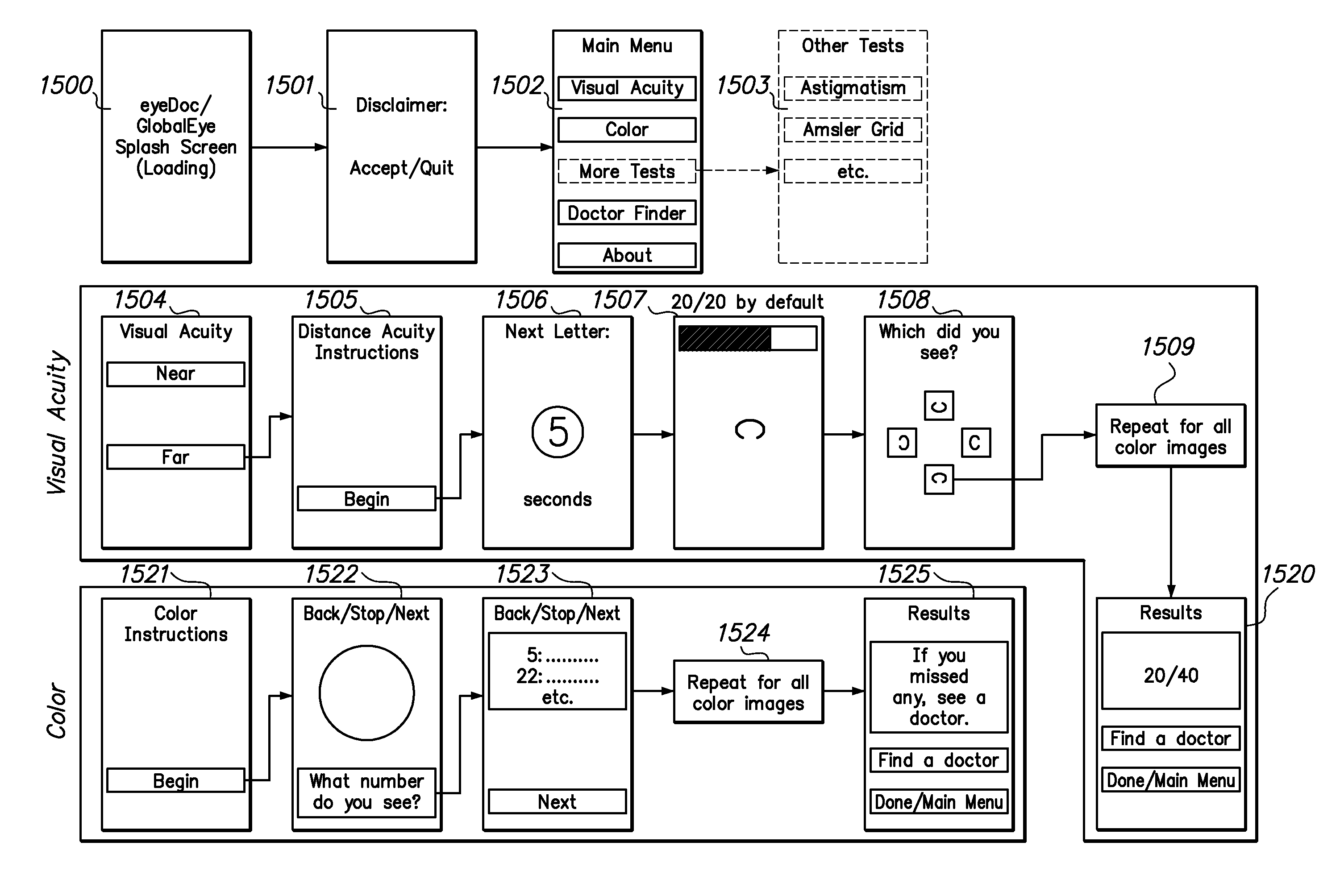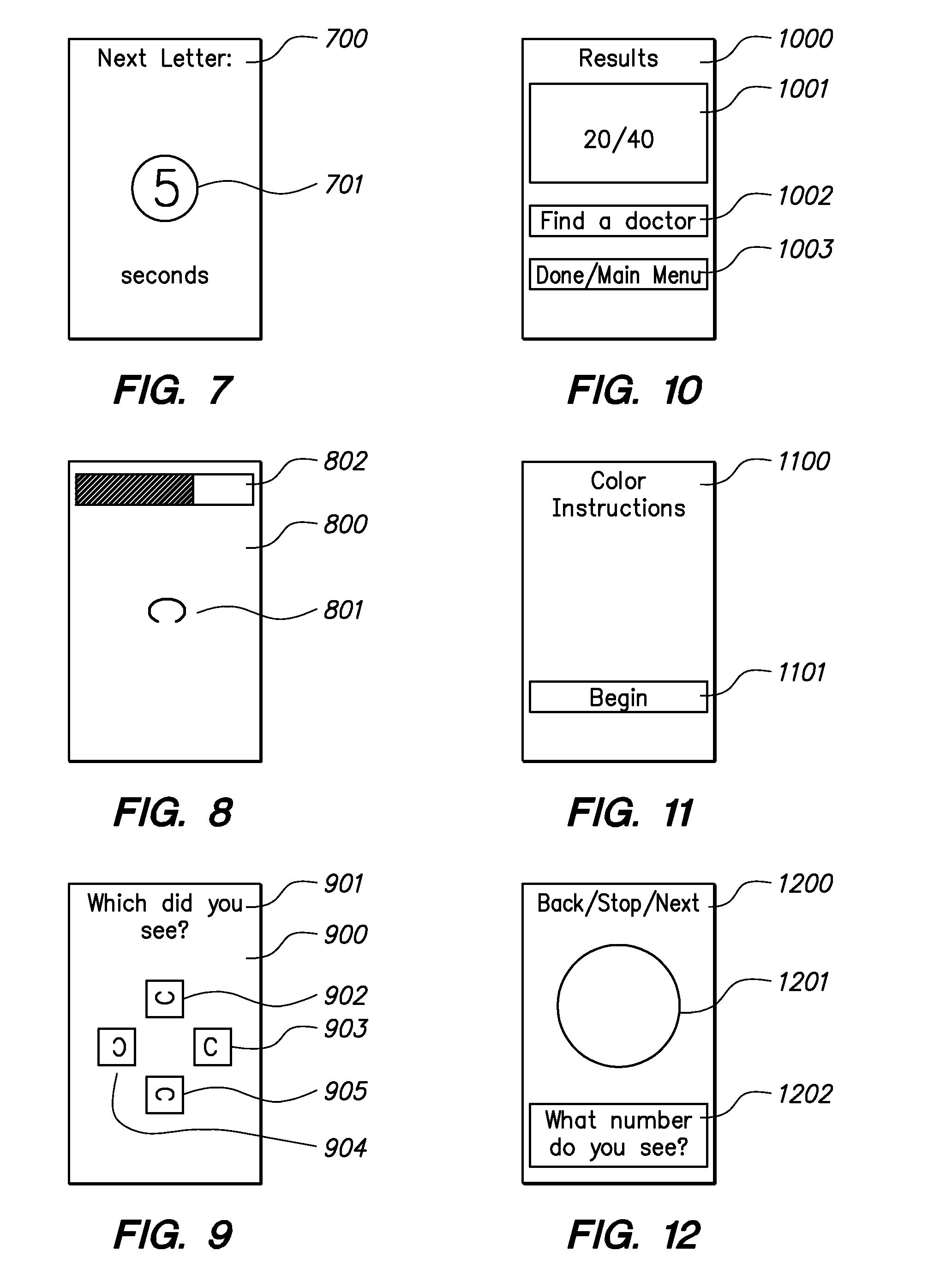Method and System for Self-Administering a Visual Examination Using a Mobile Computing Device
a mobile computing device and mobile technology, applied in the field of vision monitoring and screening testing tools, can solve the problems of delayed treatment, vision loss and vision impairment, and individual affected, and achieve the effect of facilitating scoring
- Summary
- Abstract
- Description
- Claims
- Application Information
AI Technical Summary
Benefits of technology
Problems solved by technology
Method used
Image
Examples
Embodiment Construction
[0083]In one aspect, the present invention is a method and system for the self-administration of visual acuity measurement comprising of a near and distance visual acuity tests. The ability to self-administer and monitor visual acuity over time is valuable in many respects. For example, patients who have had laser vision correction are often interested in monitoring their own visual acuity after the correction surgery. Myopic children in grade school frequently experience progression in myopia with a corresponding decrease in distance visual acuity. Furthermore, People over the age of forty (40) are expected to have changes in their ability to change visual focus between distance and near objects. The present invention can be used to measure and assess the visual acuity in various circumstances.
[0084]The present invention is a method and system to perform vision screening comprising a software program or application wherein the application can be downloaded, installed, and used with...
PUM
 Login to View More
Login to View More Abstract
Description
Claims
Application Information
 Login to View More
Login to View More - R&D
- Intellectual Property
- Life Sciences
- Materials
- Tech Scout
- Unparalleled Data Quality
- Higher Quality Content
- 60% Fewer Hallucinations
Browse by: Latest US Patents, China's latest patents, Technical Efficacy Thesaurus, Application Domain, Technology Topic, Popular Technical Reports.
© 2025 PatSnap. All rights reserved.Legal|Privacy policy|Modern Slavery Act Transparency Statement|Sitemap|About US| Contact US: help@patsnap.com



